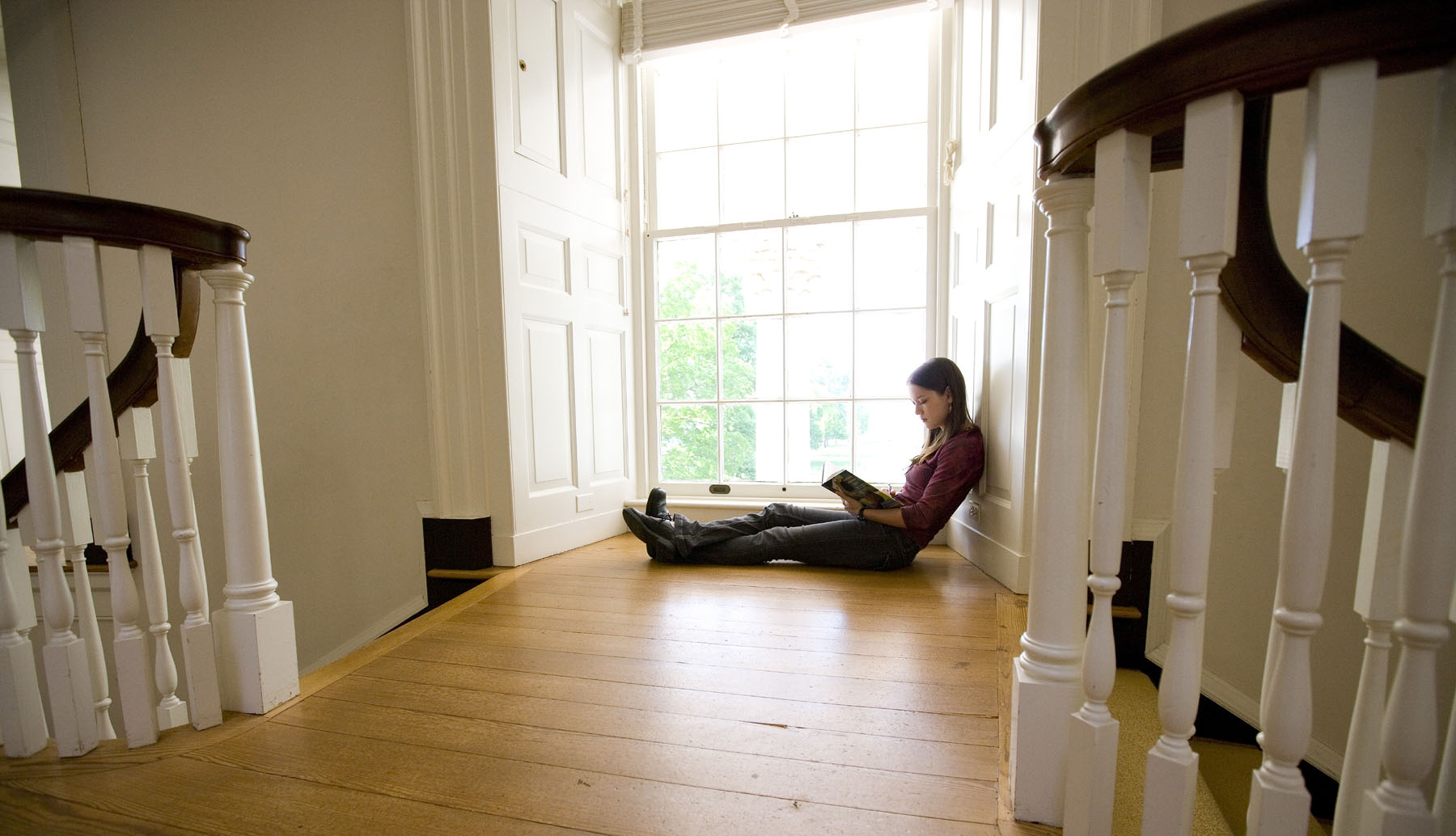The University of Virginia wants its students to make themselves at home in its historic Rotunda.
To that end, the building will host more classes and extended study hours, and will see the resumption of the tradition of first-year Dome Room dinners.
The iconic building sits at the head of the Academical Village, designed by University founder Thomas Jefferson. It was originally used as a classroom building and hosted the University’s library.
Though its architecture merits a listing as a UNESCO World Heritage Site, the Rotunda is not a museum piece, but is used every day by a variety of University groups, as well as being a starting point for U.Va. visitors. Roughly 100,000 people come through the Rotunda in a year.
“We want to increase student use of the Rotunda,” said Christine Wells, who manages the historic building’s operations. “Reviewing our 2011 numbers, we see that the students are using the building more. But they are not maximizing their opportunities.”
The new schedule, worked out by the Rotunda Programming Advisory Committee, is designed to get more first-year students into the Rotunda, to give them a sense of ownership of the place.
In the new school year, Sunday through Tuesday are designated as “student study days.” Classes are scheduled for Monday through Wednesday, and Wednesday evenings are reserved for first-year Dome Room dinners, in which dorm residents are invited to dine together.
The Rotunda already has many functions, said Brian Hogg, a senior preservation planner at the Office of the Architect. The site of many ceremonies on Grounds, it also hosts numerous banquets and meetings, including those of the Board of Visitors. It is a favored site for dissertation defenses and is, of course, a tourist destination.
“Historically, the Rotunda has been a building that every student has walked into,” Hogg said. “It was the University’s library until 1938. This is a way to recapture the importance of the building.”
The first-year dinners, which are believed to have been started in the late 1970s, were suspended last year when roof renovations forced the closure of the Dome Room.
“It has been a tradition of many years for the first-year students to eat together, organized by their associations,” said Andrew Petters, assistant dean of students in the Office of Housing and Residence Life. “It creates a connection to the heart of the University, having dinner in the former University library. It is a shared common experience for the first-years in the heart of the University.”
Students gather at their residence halls and walk to the Rotunda as a group. The meals, which are organized by the senior resident of the hall, may also feature deans and faculty members by invitation, who may also address the assembly.
“The students get dressed up for it and it is extremely popular,” Petters said.
There will be more classes scheduled for the Lower West Oval Room, though they will be limited in size – usually small seminars for first-year students.
“There have been a fair number of classes here, especially for the School of Architecture,” Wells said. “The problem has been that we have not had the technology for teaching, such as screens and projectors.”
The Dome Room also will be open from 9 a.m. to 10 p.m. from Sunday through Tuesday for students to study.
“The North Oval Room, Lower East and Lower West Oval Rooms will also be available study spaces on these evenings,” Wells said. “During exam periods, the spaces will be available daily and the hours extended until midnight.”
Students may bring covered drinks, but food is not permitted, Wells said.
“On the evenings of extended hours, students can swipe their student ID for building access after we close to the public at 5 p.m.,” Wells said. “We’re looking forward to increasing student usage of the building.”
The additions to the schedule are a logical extension of current Rotunda usage.
“The changes are enhancements to activities that already exist and should make the Rotunda more accessible to a larger portion of the University community,” Hogg said.
As part of the ongoing renovations to the Rotunda, improvements will include more electrical outlets and expanding other services. “These are things that would happen anyway and they will complement the program changes,” Hogg said.
This year is a trial operation, since the next two-year phase of construction is scheduled to begin after graduation in late May. Wells anticipates the Rotunda will be off-line fully or partially through the summer of 2016.
One change that has been well received is March’s opening of the second-floor glass doors onto the Lawn-side portico, said Wells, who noted the handicap-accessible lower doorway is still the primary entrance.
Three student Rotunda guards open and close the building and manage both entrances to the Rotunda during public hours. The University Guides offer free daily historical tours at 10 and 11 a.m. and 2, 3 and 4 p.m.
Media Contact
Article Information
August 28, 2013
/content/university-virginia-invites-students-make-more-use-rotunda

